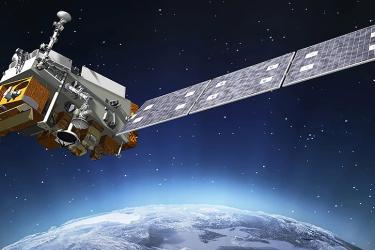The Great Lakes are some of our nation’s most important natural, recreational, and economic resources. But they face many threats, including habitat degradation, pollution, overfishing, and the spread of invasive species. NOAA and our partners work to restore habitat in the Great Lakes region to support the fish, ecosystems, and communities that rely on them.
We work through the Great Lakes Restoration Initiative to restore habitat in areas that have experienced environmental degradation, known as Areas of Concern, and priority habitat for Great Lakes fisheries. Below are a few key numbers that help illustrate the scope of our habitat restoration work in the region through this program.
15 Years
NOAA has worked through the Great Lakes Restoration Initiative since 2010 to restore habitat across the Great Lakes region. Our story map highlights the first decade of NOAA and partners’ work through the Great Lakes Restoration Initiative.
98 Projects
NOAA has supported 98 high-priority habitat restoration projects through the Great Lakes Restoration Initiative. Our efforts have helped strengthen valuable Great Lakes fisheries and restore coastal wetlands that improve water quality. We recently supported habitat restoration in places like the Detroit River in Michigan and the Buffalo River in New York.
5,180 Acres and 520 Miles
The projects we’ve supported have restored more than 5,180 acres of habitat and reopened more than 520 miles of rivers and streams for fish and wildlife. This restoration work has improved fish passage, cleaned up debris, restored coastal wetlands, and managed invasive species.
6 States
NOAA has supported habitat restoration projects in six Great Lakes states: Illinois, Michigan, Minnesota, New York, Ohio, and Wisconsin. You can explore projects we’ve supported in these states through the NOAA Restoration Atlas, our interactive project mapping tool.
17 Areas of Concern
Our habitat restoration work in the Great Lakes has helped improve conditions in 17 Great Lakes Areas of Concern. These are areas where a waterway’s poor conditions are affecting the environment, human health, and the local economy. NOAA and partners work to address the most pressing threats facing these waterways, so that they can be removed from the list of Areas of Concern. In the 1980s, there were originally 43 Areas of Concern identified: 26 in the United States, 17 in Canada, and five locations shared between the two countries. Our restoration work in places like Michigan’s Muskegon Lake and Manistique River is helping make progress toward delisting these Areas of Concern.
8 Projects to Address Great Lakes Environmental Priorities
NOAA works to support projects that have been identified as environmental priorities by the five Lake Committees. These committees, convened by the Great Lakes Fisheries Commission, are made up of officials from state, provincial, and tribal fishery agencies. Together, they are responsible for managing Great Lakes fisheries and developing plans and guidance to support healthy populations of commercial and recreational fish. Each Committee has identified priority habitat restoration projects that will help meet fish community objectives for Great Lakes fisheries. NOAA has supported eight of these projects so far, including work in Saginaw Bay in Michigan and on the Salmon River in New York.
As the largest freshwater system on earth, the Great Lakes are one of the most important natural resources in the world. They serve as important economic resources, supporting industry, transportation, commercial and recreational fishing, and tourism. NOAA’s habitat restoration work helps strengthen valuable fisheries and coastal resources and restore coastal wetlands that improve the quality of our water. It also provides recreational opportunities and supports the resilience of Great Lake communities.





